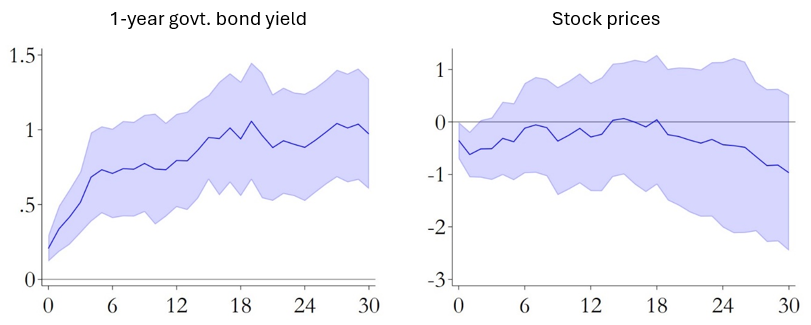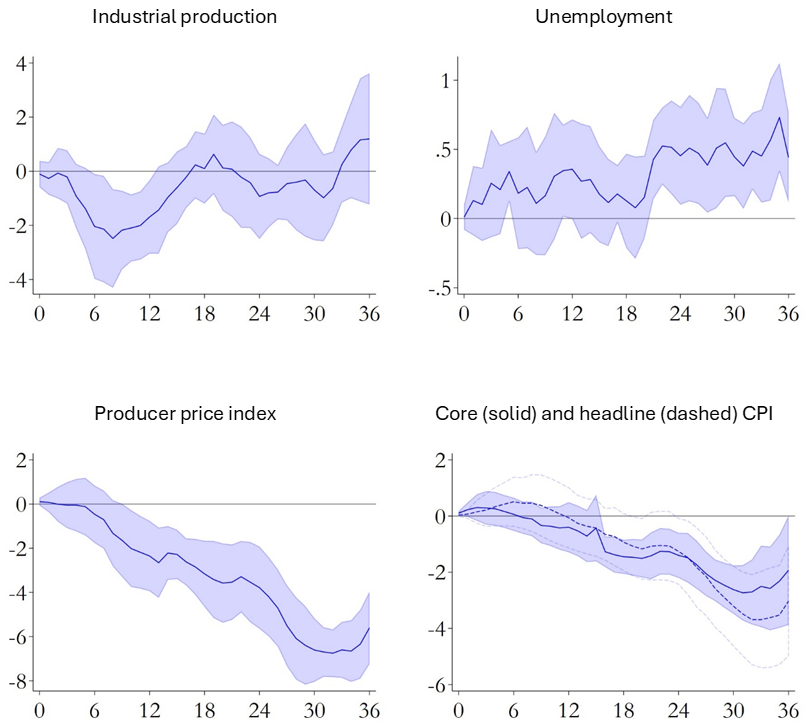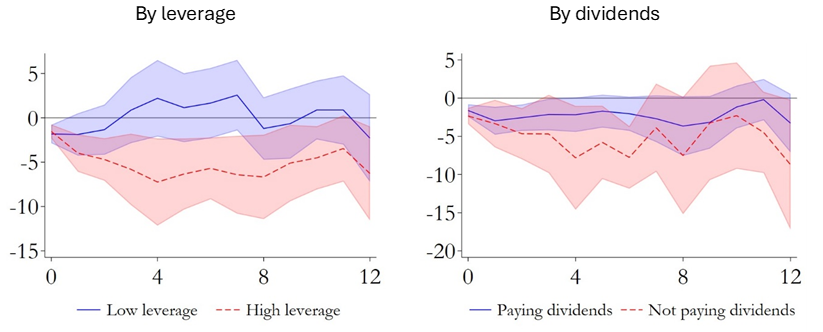References
Bruno, V and H S Shin, 2015. “Capital flows and the risk-taking channel or monetary policy,” Journal of Monetary Economics, 71: 119-132.
Caglio, C, Darst R M, and S Kalelmi-Özcan, 2022. “Collateral Heterogeneity and Monetary Policy Transmission: Evidence from Loans to SMEs and Large Firms”, CEPR Discussion Paper 17175.
Checo A, Grigoli F, and Sandri D, 2024. “Monetary Policy Transmission in Emerging Markets: Proverbial Concerns, Novel Evidence”, CEPR Discussion Paper 18954.
De Leo, P, G Gopinath, and S Kalemli-Özcan, 2023. “Monetary policy cyclicality in emerging economies”, VoxEU.org, 14 April.
Frankel, J, 2010. “Monetary Policy in Emerging Markets,” Handbook of Monetary Economics, 3: 1439 – 1520.
Gourinchas, P-O, 2018. “Monetary policy transmission in emerging markets: an application to Chile”, Central Bank. Analysis, and Economic Policies Book Series, 25: 279-324.
Kalemli-Özcan, S, 2019. “U.S. Monetary Policy and International Risk Spillovers”, Proceedings of the Jackson Hole Symposium.
Kalemli-Özcan, S and F D Unsal, 2019. “Global Transmission of FED Hikes: The Role of Policy Credibility and Balance Sheets”, NBER Working Paper 32329.
Kuttner, K N, 2001. “Monetary policy surprises and interest rates: Evidence from the Fed funds futures market.” Journal of Monetary Economics, 47(3): 523–544
Miranda-Agrippino, S and H Rey, 2020. “U.S. Monetary Policy and the Global Financial Cycle,” Review of Economic Studies, 87(6): 2745 – 2776.
Obstfeld, M, 2015. “Trilemmas and trade-offs: Living with financial globalization”. In: Raddatz, Claudio, Saravia, Diego, Ventura, Jaume (Eds.), Global Liquidity, Spillovers to Emerging Markets and Policy Responses. Central Bank of Chile, pp. 13–78 Chapter 2.
Rey, H, 2013. “Dilemma not Trilemma: The global financial cycle and monetary policy independence”, VoxEU.org, 31 August.
Sandri D, Grigoli F, N-J Hansen, and K Bergant, 2020. “Macroprudential regulation can effectively dampen global financial shocks in emerging markets”, VoxEU.org, 12 August.








